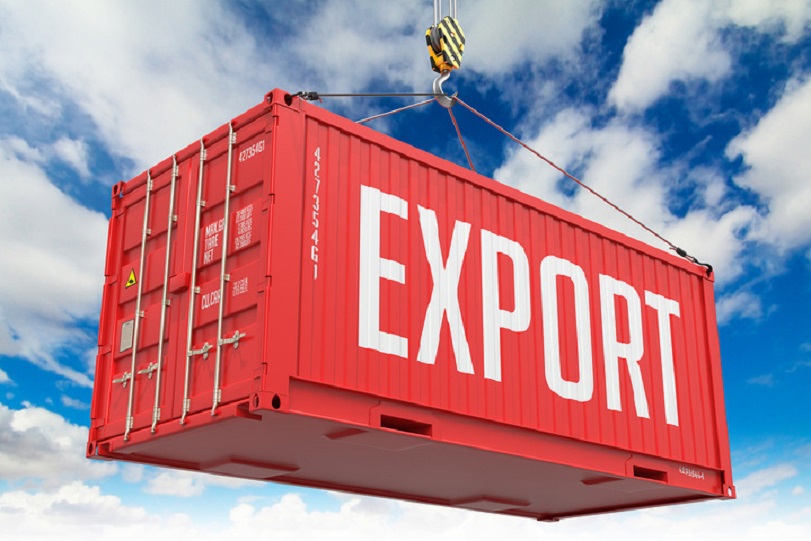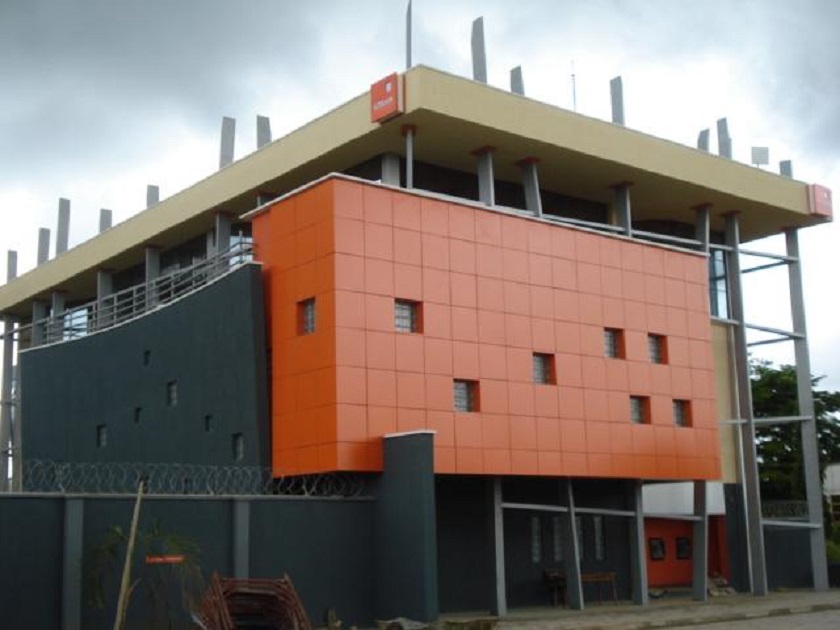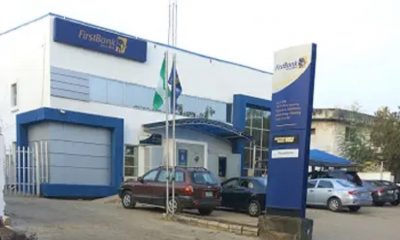Economy
Quantum Computing: Bitcoin’s Resilience vs. QLC Chain’s Approach

In the realm of cryptocurrency, where security and decentralization are paramount, the emergence of quantum computing presents a profound challenge. Quantum computers harness the strange principles of quantum mechanics to process information at speeds unimaginable to classical computers. While this technology holds promise for various scientific and computational breakthroughs, it also poses a significant threat to the security of existing cryptographic systems, including Bitcoin. In this article, we will explore the fundamentals of quantum computing, assess Bitcoin’s vulnerability to quantum attacks, examine quantum-resistant cryptocurrencies like QLC Chain, and contemplate the future implications of this evolving landscape. Want to learn more about ChainWizard Ai? Join chain-reaction-trading.com and get a whole new experience.
The Fundamentals of Quantum Computing
Explaining Quantum Bits (Qubits)
To comprehend the quantum threat, one must first grasp the essence of quantum bits or qubits. Unlike classical bits that can only be in a state of 0 or 1, qubits exist in superpositions, meaning they can represent both 0 and 1 simultaneously. This property forms the foundation of quantum computing, enabling complex calculations to be performed exponentially faster than classical computers.
Quantum Entanglement and Superposition
Quantum entanglement is another crucial concept. When qubits become entangled, the state of one instantly influences the state of the other, even if they are separated by vast distances. This bizarre phenomenon allows quantum computers to solve problems that are practically insurmountable for classical counterparts.
Quantum Algorithms – Shor’s Algorithm and Grover’s Algorithm
Two quantum algorithms are of particular concern to the world of cryptocurrency: Shor’s algorithm and Grover’s algorithm. Shor’s algorithm can factor large numbers exponentially faster than classical algorithms, which could compromise the security of public-key cryptography that underpins Bitcoin. Grover’s algorithm, on the other hand, can search unsorted databases quadratically faster, posing a threat to the security of hash functions.
Bitcoin’s Vulnerability to Quantum Attacks
How Classical Encryption Works
To understand Bitcoin’s vulnerability, it’s essential to grasp how classical encryption works. Bitcoin relies on cryptographic algorithms to secure transactions and wallets. Public-key cryptography, which includes algorithms like RSA and ECC, forms the basis of this security. The strength of these algorithms lies in the difficulty of factoring large numbers or solving discrete logarithm problems, which are believed to be intractable for classical computers.
Quantum Attacks on Bitcoin’s Security
Quantum computing could potentially render these cryptographic defenses obsolete. Shor’s algorithm, if executed on a powerful enough quantum computer, could break the security of Bitcoin’s public keys by efficiently factoring the large numbers used in key pairs. This would enable malicious actors to access and spend bitcoins from any address.
Potential Consequences of a Successful Attack
The consequences of a successful quantum attack on Bitcoin would be far-reaching. Confidence in the cryptocurrency’s security would be shaken, leading to a loss of trust from users and investors. Bitcoin’s value could plummet, and the entire ecosystem could be thrown into disarray.
Quantum-Resistant Cryptocurrencies
What Is Quantum Resistance?
Quantum resistance refers to the ability of a cryptographic system to withstand attacks from quantum computers. Achieving quantum resistance is crucial for ensuring the long-term security of cryptocurrencies.
Current Quantum-Resistant Cryptocurrencies
Several cryptocurrencies have recognized the need for quantum resistance and have adopted quantum-resistant cryptographic techniques. These include projects like IOTA, which uses the Tangle technology, and QRL (Quantum Resistant Ledger), which implements post-quantum cryptography.
Pros and Cons of Quantum-Resistant Approaches
While quantum-resistant cryptocurrencies offer enhanced security against quantum attacks, they also come with trade-offs. Post-quantum cryptographic algorithms may be less efficient than their classical counterparts, potentially impacting transaction speeds and scalability. Striking a balance between security and usability is a challenge for these projects.
QLC Chain: A Quantum-Resistant Blockchain Solution
Overview of QLC Chain
One notable quantum-resistant blockchain project is QLC Chain. QLC Chain is designed to provide a secure and scalable infrastructure for the next generation of telecommunications and blockchain services. It employs quantum-resistant cryptographic techniques to protect user data and transactions.
QLC Chain’s Quantum-Resistant Technology
QLC Chain utilizes lattice-based cryptography, a form of post-quantum cryptography, to safeguard its network. Lattice-based cryptography is believed to be resilient against attacks from both quantum and classical computers.
Use Cases and Adoption Potential
QLC Chain’s focus on telecom and data services positions it as a potential leader in the quantum-resistant blockchain space. Its technology has applications in secure communications, IoT, and more, making it an attractive option for industries seeking quantum-ready solutions.
Challenges in Achieving Quantum Resistance
The Race Against Quantum Advancements
As quantum technology advances, so does the urgency to develop and implement quantum-resistant solutions. The timeline for quantum computer development remains uncertain, but the cryptocurrency industry must stay ahead of the curve to protect user assets.
Balancing Security and Usability
The challenge lies in balancing security with usability. Quantum-resistant cryptographic algorithms may be computationally intensive, potentially slowing down transaction processing. Striking the right balance is crucial to maintain a seamless user experience.
Cryptographic Research and Development
The quest for quantum-resistant solutions involves ongoing cryptographic research and development. Collaborations between academia, industry, and blockchain projects are essential to stay at the forefront of cryptographic advancements.
Future Outlook: Quantum Computing in the Cryptocurrency Landscape
Quantum Computing’s Impact on the Blockchain Industry
The rise of quantum computing presents both challenges and opportunities for the blockchain industry. While it threatens existing cryptographic systems, it also opens the door to new cryptographic innovations that can enhance blockchain security.
Research and Development Efforts in Quantum-Resistant Cryptography
Cryptographers and blockchain developers are actively researching and developing quantum-resistant cryptographic techniques. These efforts aim to future-proof blockchain networks and protect them from quantum threats.
Preparing for an Uncertain Future
In an ever-changing landscape, preparation and adaptability are key. The cryptocurrency community must remain vigilant, monitor quantum advancements, and implement quantum-resistant solutions as needed to ensure the long-term viability of digital assets.
Conclusion
As the worlds of quantum computing and cryptocurrency collide, the urgency of developing quantum-resistant defenses has reached a critical juncture. Bitcoin, the trailblazer in the realm of digital currencies, now confronts the looming specter of quantum threats, capable of fundamentally altering the cryptocurrency landscape. Quantum-resistant digital currencies, exemplified by QLC Chain, offer a glimpse into a future where the security of digital assets can withstand the formidable computational power of quantum computers. In this ongoing race toward quantum supremacy, the cryptocurrency community finds itself compelled to maintain unwavering vigilance, adaptability, and innovation, safeguarding the durability of blockchain networks in the face of an uncertain quantum era. Amid these evolving challenges, exploring forward-looking solutions like the Bitcoin Era emerges as a compelling avenue to fortify the security of digital assets.
Economy
ACCI Urges Policy Consistency, MSMEs Protection in 2026

By Adedapo Adesanya
The Abuja Chamber of Commerce and Industry (ACCI) has called for policy consistency, the protection of Micro Small and Medium Enterprises (MSMEs), and private sector-led growth to strengthen Nigeria’s economy in 2026.
The President of the chamber, Mr Emeka Obegolu, made the call in a New Year message issued by the ACCI Media and Strategy Officer, Mrs Olayemi John-Mensah, on Thursday in Abuja.
He submitted that consistent policies and private-sector-friendly reforms were critical to reducing the cost of doing business and achieving sustainable economic development, stressing the need for strong protection of MSMEs, describing them as the backbone of the Nigerian economy.
According to him, sustained stakeholder engagement and predictable reforms would encourage investment and business expansion.
The ACCI president said the organised private sector remained cautiously optimistic about business opportunities in 2026, noting that the optimism persisted in spite global and domestic economic pressures affecting businesses.
He commended Nigerian businesses for their resilience and adaptability in navigating the economic challenges of 2025, adding that businesses demonstrated commitment to innovation and value creation despite inflation and foreign exchange volatility.
Mr Obegolu also cited high energy costs, rising interest rates and limited access to finance as key constraints faced by enterprises.
According to him, these challenges underscored the importance of chambers of commerce in advocating stability and competitiveness.
He said economic reforms were necessary but should be carefully sequenced to safeguard MSMEs and organised businesses.
Mr Obegolu warned that poorly managed reforms could result in business closures, job losses and capital flight.
He drew attention to over N720 billion in outstanding contractor debts owed by government.
He said delayed settlement of verified obligations had weakened cash flows and disrupted supply chains.
According to him, the situation had particularly affected indigenous contractors and MSMEs nationwide.
He urged government to prioritise transparent verification and timely settlement of the debts to stimulate economic activity.
Mr Obegolu also called on the Federal Government and the FCT Administration to create a more enabling and predictable business environment.
He noted that Abuja had evolved into a major commercial and investment hub requiring stronger infrastructure and regulatory support.
He reaffirmed ACCI’s commitment to constructive engagement with government to promote ease of doing business and inclusive economic growth.
Economy
AfCFTA: FG to Identify One Exportable Product from Each of 774 Local Councils

By Adedapo Adesanya
The Minister of Industry, Trade and Investment, Mrs Jumoke Oduwole, has said the federal government would deepen its participation in the African Continental Free Trade Area (AfCFTA) in 2026 by working with state governors to identify at least one exportable product in each of the country’s 774 local governments.
The move gears towards scaling production, boosting non-oil exports, and strengthening competitiveness across Africa.
She made this disclosure while speaking on Nigeria’s AfCFTA Achievements Report 2025 under the Federal Ministry of Industry, Trade and Investment.
The Minister noted that Nigeria’s AfCFTA Agenda in 2026 will be building on implementation milestones recorded in 2025.
According to her, the plan aims at positioning the country to better exploit opportunities under the continent-wide trade pact.
Operationalised through the AfCFTA Central Coordination Committee (CCC), the Ministry will collaborate with development partners across public and private sector institutions to mobilise production nationwide, while also undertaking an awareness and sensitisation campaign.
“FMITI will work with the Nigerian Governors’ Forum and State Governments to identify a minimum of one (1) product that each Local Government Area can export into the AfCFTA market,” the report stated.
Beyond local production, the 2026 agenda places a strong emphasis on creating an enabling policy and regulatory environment to support the full implementation of the AfCFTA Agreement and its protocols, with the Ministry of Industry, Trade, and Investment leading the regulatory alignment efforts.
In addition, Nigeria plans to upgrade trade data systems to effectively track AfCFTA trade flows, including disaggregated data on goods, services, and participation by women and youth, while expanding global advocacy and hosting key continental trade events ahead of the Intra-African Trade Fair in 2027.
The report also outlines plans to demystify AfCFTA rules and compliance requirements through a series of targeted publications for businesses, alongside measures to strengthen institutional coordination and improve accountability among public sector agencies involved in trade facilitation.
On investment and industrial capacity, the document notes that: “Investment mobilisation efforts with foreign and domestic investors will prioritise the exponential increase of productive capacity in key sectors, to position Nigeria as the innovation, production and distribution hub of the AfCFTA market.”
Economy
NNPC Plans New Oil Fields Development, to Raise $30bn by 2030

By Adedapo Adesanya
The Nigerian National Petroleum Company (NNPC) Limited plans to develop new oil fields from next year and seeks to raise at least $30 billion by the end of the decade.
According to Bloomberg, this was disclosed by senior officials familiar with the plans in the country which is Africa’s largest oil producing nation.
The state-owned oil firm is raising the money as part of efforts to reverse years of underinvestment that have left several discoveries undeveloped, the people said, without disclosing the new fields being targeted.
The publication revealed that the NNPC expects significant investment decisions to come through next year, according to the people who declined to be identified because the talks involve confidential commercial matters.
The sources also said the NNPC is also reviewing its portfolio and plans to sell non-performing fields, adding that the firm will likely meet more than half of its fundraising target.
The energy company plans to develop some of the fields in-house and is expected to call for bids early next year, the people said.
NNPC also plans to boost oil output by 5 per cent to 1.8 million barrels per day next year compared with 2025 and is targeting 4 million barrels of daily output by 2030.
It also targets the completion of the $2.8 billion Ajaokuta-Kaduna-Kano (AKK) pipeline, connecting various segments to the main line from early next year, one of the people said.
Once ready, the pipeline will deliver gas at scale to parts of northern Nigeria including the capital of Abuja, supplying industrial parks, fertilizer plants and power-generation facilities.
Recall that the chief executive of the NNPC, Mr Bashir Ojulari, recently said the country would begin to export gas from the $2.8 billion Ajaokuta-Kaduna-Kano (AKK) pipeline from early 2026.
First conceived in 2008, the AKK pipeline is central to Nigeria’s ambition to leverage its vast gas reserves for economic growth. Its completion could transform the north, where chronic power shortages and a lack of energy infrastructure have stifled manufacturing for decades.
-

 Feature/OPED6 years ago
Feature/OPED6 years agoDavos was Different this year
-
Travel/Tourism9 years ago
Lagos Seals Western Lodge Hotel In Ikorodu
-

 Showbiz3 years ago
Showbiz3 years agoEstranged Lover Releases Videos of Empress Njamah Bathing
-

 Banking8 years ago
Banking8 years agoSort Codes of GTBank Branches in Nigeria
-

 Economy3 years ago
Economy3 years agoSubsidy Removal: CNG at N130 Per Litre Cheaper Than Petrol—IPMAN
-

 Banking3 years ago
Banking3 years agoFirst Bank Announces Planned Downtime
-

 Banking3 years ago
Banking3 years agoSort Codes of UBA Branches in Nigeria
-

 Sports3 years ago
Sports3 years agoHighest Paid Nigerian Footballer – How Much Do Nigerian Footballers Earn























